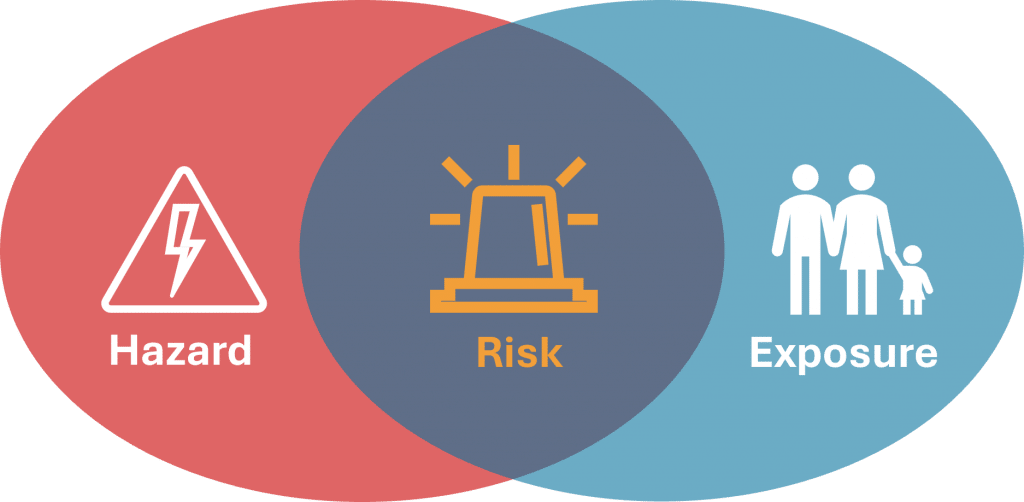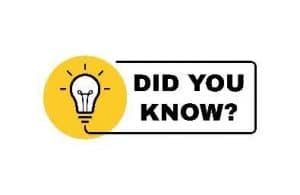
Why take ambient air measurements?
Ambient air quality is an important issue for human health and the environment. There are regulations at European and national level to monitor, assess and prevent air pollution and its harmful effects.
At European level, the main directives governing ambient air quality are:
- Directive 2008/50/EC of May 21, 2008 on ambient air quality and cleaner air for Europe. This directive sets limit values, target values and alert thresholds for various atmospheric pollutants, such as sulfur dioxide, nitrogen dioxide, fine particles, ozone, benzene and lead. It also requires Member States to put in place air quality plans and short-term measures in the event oh thresholds being exceeded.
- Directive 2004/107/EC of December 15, 2004 relating to arsenic, cadmium, mercury, nickel and polycyclic aromatic hydrocarbons in ambient air. This directive sets target values for these pollutants, which are considered to be carcinogenic substances. It also requires Member States to assess the concentration of these pollutants in ambient air and to reduce their exposure.
At national level, French regulations specify the implementation of European directives, or even supplement them. National air quality criteria are defined in:
- The Environment Code (articles R221-1 to R221-3), which transposes European directives and sets limit values, target values, alert thresholds and quality objectives for atmospheric pollutants. It also sets out the procedures for monitoring air quality, informing the public and managing pollution episodes.
- The decree of October 21, 2010, which amends the Environment Code and introduces stricter limit values for fine particulate matter (PM2.5) and ozone, in line with Directive 2008/50/EC.
- The Order of April 16, 2021 on the national ambient air quality monitoring system, which sets out the missions of the players in the national air quality monitoring system and the applicable technical requirements.
Some examples of ambient air measurement applications are listed below:
- Monitoring emissions from road traffic
- Measurements downstream of industrial accidents
- Olfactory disorders, characterization of odorous compounds
- Site surveillance
- Impact on the environment and local residents
- Quantitative assessment of health hazards (EQRS)
What compounds are measured in Ambient Air?
TERA Environnement offers analysis of a wide range of chemical contaminants.
TERA Environnement can analyze over 500 VOCs, including
- Aromatic and aliphatic hydrocarbons
- TPH (Total Petroleum Hydrocarbons) fractions from C5 to C16
- Oxygenates including methanol, phenol and cresols :
Methanol; Ethanol; Tert-butanol; 1-Butanol; 1-Propanol; 2-Butanol (Sec-Butanol); 2-Propanol (IPA); Isobutanol; Phenol; o-Cresol; m-Cresol; p-Cresol etc.
- Volatile Organic Halogenated Compounds or Halogenated VOCs :
Vinyl chloride monomer (VCM); Dibromomethane; Trichloromethane (Chloroform); Tetrachloromethane (CCl4); 1,2-Dichloroethane (1,2-DCE); 1,1-Dichloroethylene; Cis 1,2 Dichloroethylene; 1,1,1 Trichloroethane ; Trichloroethylene; Tetrachloroethylene (Perchloroethylene); 1,2-Dichloropropane; Trans 1,3 Dichloropropene; Cis 1,3 Dichloropropene; Trans 1,2 Dichloroethylene; 1,1,2-Trichloroethane; 1,1 Dichloroethane; Chloroethane
- Mercaptans and sulfur compounds :
Tert-Butylthiol; Methanethiol; Ethanethiol; 1-Propanethiol; 2-Propanethiol; 1-Butanethiol; 2-Butanethiol; Dimethyl sulfide (DMS); Carbon Disulfide (CS2); Dimethyl Disulfide (DMDS); Dimethyl Trisulfide (DMTS)
- Acid gases :
Hydrogen sulfide (H2S); Ammonia (NH3); Hydrochloric acid (HCl); Hydrofluoric acid (HF); Total cyanides; Sulfur dioxide (SO2); Nitrogen dioxide (NO2); Nitrogen monoxide (NO) etc.
- Amines :
Allylamine; Diethylamine; Dimethylamine; Dipropylamine; Ethanolamine (2-aminoethanol); Ethylamine; Methylamine; N-Butylamine; Triethylamine; Trimethylamine
- Formaldéhyde ; Acétaldéhyde ; Propanal ; Butanal ; Benzaldéhyde ; Isopentanal ; Pentanal ; Hexanal ; 2-Butenal ; Acroléine (2-Propénal) ; Acétone
- PM 10 PM 2.5
- Aluminium (Al) ; Antimoine (Sb) ; Argent (Ag) ; Arsenic (As) ; Baryum (Ba) ; Béryllium (Be) ; Bore (B) ; Cadmium (Cd) ; Cérium (Ce) ; Césium (Cs) ; Chrome (Cr) ; Cobalt (Co) ; Cuivre (Cu) ; Dysprosium (Dy) ; Erbium (Er) ; Étain (Sn) ; Europium (Eu) ; Fer (Fe) ; Gadolinium (Gd) ; Gallium (Ga) ; Germanium (Ge) ; Hafnium (Hf) ; Holmium (Ho) ; Lanthane (La) ; Lithium (Li) ; Lutécium (Lu) ; Manganèse (Mn) ; Mercure (Hg) particulaire & gazeux, Molybdène (Mo) ; Néodyme (Nd) ; Nickel (Ni) ; Niobium (Nb) ; Or (Au) ; Palladium (Pd) ; Phosphore (P) ; Platine (Pt) ; Plomb (Pb) ; Praséodyme (Pr) ; Rhénium (Re) ; Rhodium (Rh) ; Rubidium (Rb) ; Ruthénium (Ru) ; Samarium (Sm) ; Scandium (Sc) ; Sélénium (Se) ; Silicium (Si) ; Strontium (Sr) ; Tantale (Ta) ; Tellure (Te) ; Terbium (Tb) ; Thallium (Tl) ; Thulium (Tm) ; Titane (Ti) ; Uranium (U) ; Vanadium (V) ; Ytterbium (Yb) ; Yttrium (Y) ; Zinc (Zn) ; Zirconium (Zr)
- Naphthalene; Acenaphthene; Fluorene; Phenanthrene; Anthracene; Fluoranthene; Pyrene; Benzo(a)Anthracene; Chrysene; Benzo(b+j)Fluoranthene; Benzo(k)Fluoranthene; Benzo(a)Pyrene (BaP); DiBenzo(a,h)Anthracene; Benzo(g,h,i)Perylene; Indeno(1,2,3,c,d)pyrene; Acenaphthylene
- Quartz; Cristobalite; Tridymite
Please contact us
- N-Nitrosopyrrolidine (NPYR) ; N-Nitrosopipéridine (NPIP) ; N-Nitrosométhyléthylamine (NMEA) ; N-Nitrosodiéthylamine (NDEA) ; N-Nitrosomorpholine (NMOR) ; N-Nitrosodipropylamine (NDPA) ; N-Nitrosodiméthylamine (NDMA) ; N-Nitrosodibutylamine (NDBA)
What sampling equipment is available for your ambient air measurements?
TERA Environnement can supply and/or rent the sampling media and equipment needed for the analyses you require.
- Radiello® (code 130; code 141; code 145; code 147; code 165; code 166; code 168; code 169; code 170)
- Ogawa for NOx
- Owen gauges
- SKC passive badges for gaseous mercury
- DIEM deposition plates
Passive samplers are used for on-site exposure between 8 hours and 7 days, and do not require the use of sampling pumps.
- Quartz and PVC filters
- Impregnated filters
- DNPH cartridges
- Activated carbon tubes, silica gel tubes, Thermosorb/N tubes for nitrosamines
- Thermodesorption tubes
- Bubblers and bubbling solutions
- Canisters
Active samplers are used in conjunction with sampling pumps, and are designed for measurements lasting from a few hours to a day.
- Pumps
- Cyclones for respirable fraction
- Veriflow for canister sampling
Which parameters are available under COFRAC accreditation?
TERA Environnement is COFRAC accredited in Ambient Air for VOCs, aldehydes, acids, total dust and metals.

Consult our scopes of accreditation: Accréditation Cofrac Essais 1-5598 et 1-5599, list of sites and scopes available on www.cofrac.fr/en
Scope of our Crolles laboratory: 1-5598 Fuveau laboratory: 1-5599 Scope of our Fuveau laboratory: 1-5599
- VOCs: Benzene; Toluene; Ethylbenzene; o-Xylene; (m+p) Xylene (BTEX) and 1,2-Dichloroethane (1,2-DCE) on passive sampler Radiello code 145
- 1,3-Butadiene on canister and thermodesorption tube
- Aldehydes (Acetaldehyde; Hexanal; Formaldehyde; Propanal; Pentanal (Valeraldehyde); Benzaldehyde) on passive support Radiello code 165
- Nitrogen dioxide (NO2) and hydrofluoric acid (HF) on passive sampler Radiello code 166
- Ammonia (NH3) on passive sampler Radiello code 168
- Hydrochloric acid (HCl) on passive sampler Radiello code 169
- Hydrogen sulfide (H2S) on passive sampler Radiello code 170
- Nitrogen Monoxide (NO) and Nitrogen Dioxide (NO2) on Ogawa passive sampler
- Total dust on Owen gauge
- Metals (Antimony (Sb); Arsenic (As); Cadmium (Cd); Cobalt (Co); Copper (Cu); Manganese (Mn); Nickel (Ni); Lead (Pb); Vanadium (V)) on 47 mm quartz filter
- Gaseous mercury (Hg) on passive badge and active tube
- PFAS (per- and polyfluoroalkyl substances): Linear PFOS (CAS 1763-23-1); PFHxA (CAS 307-24-4); PFOA (CAS 335-67-1); 8:2 FTSA (CAS 39108-34-4); FOSA (CAS 754-91-6) on 47mm quartz filter for PFAS and on polyethylene gauge for PFAS
- Nitrosamines: N-Nitrosopyrrolidine (NPYR); N-Nitrosopiperidine (NPIP); N-Nitrosomethylethylamine (NMEA); N-Nitrosodiethylamine (NDEA); N-Nitrosomorpholine (NMOR); N-Nitrosodipropylamine (NDPA); N-Nitrosodimethylamine (NDMA); N-Nitrosodibutylamine (NDBA) on Thermosorb/N tube
Health Risk Assessment (HRA)
Today, health risk assessment (HRA) is an essential step in guaranteeing the health safety of populations exposed to potentially dangerous chemical or biological substances. For operators of classified installations (ICPE in France) and site managers, this method represents not only a regulatory obligation, but also a commitment to public health.
As a laboratory specialising in air quality analysis, we can help you with your measurements and carry out air analyses as part of the HRA.
What is HRA?
Developed in the 1980s in the United States by the National Research Council (NRC) and the US-EPA, HRA is defined as the use of scientific evidence to assess the health effects of exposure to hazardous substances or situations.
It is based on a key distinction:
- Hazard: Any source (chemical, physical or biological) likely to cause harm.
- Risk: The probability of harm occurring if exposed to this hazard.
In other words, risk only exists if a subject is exposed to a hazard.

HRA’s 4 key stages:
Analysis of substances present on the site based on reliable scientific data and a review of the literature.
Each substance is studied to establish a dose-response relationship, often expressed as a Toxicological Reference Value (TRV).
Modeling potential exposures based on environmental data, such as weather conditions or site characteristics.
Calculation of hazard ratios for threshold effects (such as respiratory disorders) and assessment of impact for non-threshold effects (e.g., the number of cancers attributable to exposure).
Why entrust us with your measurements?
Since the introduction of the law of 30 December 1996, which made it compulsory to include a health component in impact studies for ICPE, HRA has become a regulatory requirement in France.
We can intervene at various stages of the HRA:
- Hazard identification
We supply the equipment needed to carry out measurement campaigns to identify the substances present on your sites. We provide user guides and our engineers are available to answer any questions you may have about setting up sampling media - Tools for estimating exposure
We offer solutions such as renting monitoring stations to collect the data needed to model pollutant dispersion. - Sensitivity and reliability of analyses
Our limits of quantification (LOQs) are low, well below TRVs, guaranteeing accurate identification of contaminants, even at very low concentrations.
In other words, for Quantitative Health Risk Assessment (QHRA), a sub-category of HRA, it is essential to be able to detect low concentrations. TERA Environnement can provide you with suitable quantification limits for quantitative risk assessment.
An overview of some of our analytical performances:
- 1,3-butadiene: LQ= 5.6 ng/sampler (thermodesorption tube) and 0.14 ng/sampler (6L canister)
- Benzene: LOQ = 5 ng/sampler (passive badge) – analysis possible under COFRAC* accreditation with LOQ = 40 ng/sampler
- TEX (Toluene, Ethylene, Xylene) : LOQ = 5 ng /sampler (passive badge) – analysis possible under COFRAC* accreditation with LOQ = 40 ng / support
- Mercury: LOQ = 5 ng/sampler (passive badge)
- Other metals :
Lead: LOQ = 7.5 ng/sampler (quartz filter) under COFRAC* accreditation
Copper : LOQ = 150 ng/sampler (quartz filter) under COFRAC* accreditation

TERA Environnement has extensive experience in the field of ambient air analysis. We also offer 31 accredited ambient air parameters!

